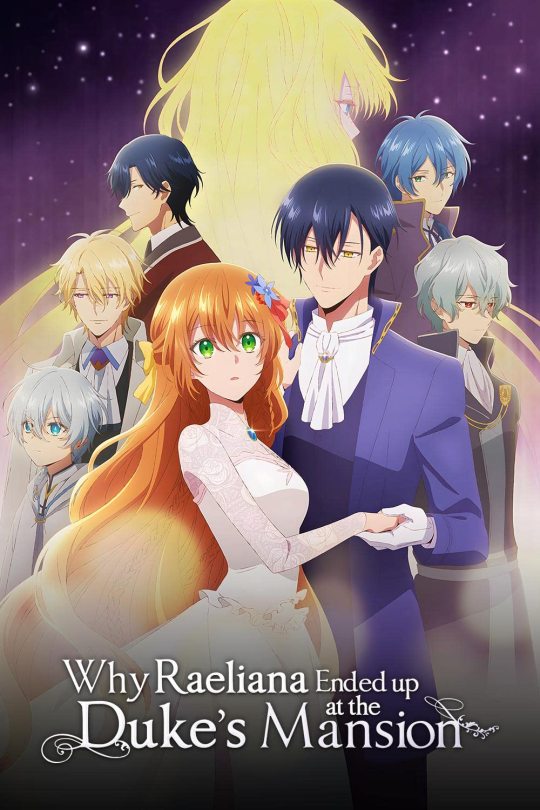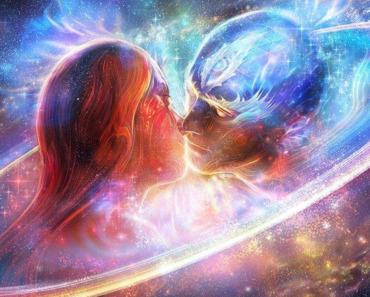#Love Between Twins is Indivisible
Text


























Anime Series - Main and Alternate Posters
#Anime#Poster#Moments#A Sign of Affection#The Apothecary Diaries#The Demon Prince of Momochi House#Why Raeliana Ended Up at the Duke's Mansion#Love Between Twins is Indivisible#Sacrificial Princess and the King of Beasts#Horimiya The Missing Pieces#Rurouni Kenshin#Sugar Apple Fairy Tale#Villainess Level 99#7th Time Loop#Doctor Elise#Mr Villain's Day Off
447 notes
·
View notes
Text
youtube
“Koi wa Futago de Warikirenai” The First Promo for Summer 2024
Kadokawa unveiled the promotional video for the television anime adaptation of Shihon Takamura's light novel Koi wa Futago de Warikirenai (Love Between Twins is Indivisible). The July 2024 premiere of the anime is planned.
#koi wa futago de warikirenai#love between twins is indivisible#jun shirasaki#ryuumi jinguuji#naori jinguuji#anime#anime adaptation#anime news#Youtube
6 notes
·
View notes
Link
The previously announced Koi wa Futago de Warikirenai (Love Between Twins Is Indivisible) anime revealed a new visual and trailer along with the main cast and staff on Wednesday. Shogo Sakata is starring as the main protagonist Jun Shirosaki while Moeha Nochimoto and Maaya Uchida will voice the twins Rumi and Naori Shinguji. Studio Roll2 is animating the series that is set to premiere in July 2024.Koi wa Futago de Warikirenai – VisualKoi wa Futago de Warikirenai anime is based on the light novel series written by Shihon Takamura and illustrations provided by Almic. It began its publication in May 2021 by ASCII Media Works under their Dengeki Bunko publishing imprint and it currently has 5 volumes in circulation, with the latest one released last March. A manga adaptation of the light novel with art done by Okari has been serialized in Comic Dengeki DaiohG in 2022 and has 2 volumes currently available. Almic and Okari previously shared an illustration to commemorate the anime adaptation announcement.[wpcc-iframe data-lazyloaded="1" data-ezsrc="about:blank?ez_iframe=1" title="TVアニメ「恋は双子で割り切れない」PV第1弾《2024年7月放送スタート!》" width="1170" height="658" data-src="https://www.youtube.com/embed/lH_ka9Aj5cI?feature=oembed" frameborder="0" allow="accelerometer; autoplay; clipboard-write; encrypted-media; gyroscope; picture-in-picture; web-share" allowfullscreen class="ezlazyload"][wpcc-iframe title="TVアニメ「恋は双子で割り切れない」PV第1弾《2024年7月放送スタート!》" width="1170" height="658" src="https://www.youtube.com/embed/lH_ka9Aj5cI?feature=oembed" frameborder="0" allow="accelerometer; autoplay; clipboard-write; encrypted-media; gyroscope; picture-in-picture; web-share" allowfullscreen]Koi wa Futago de Warikirenai – TrailerThe plot of Koi wa Futago de Warikirenai romantic comedy revolves around Jun, a young boy who is childhood friend with two twin sisters with different personalities. Rumi appears tomboyish but is an otome (maiden) on the inside while Naori has a charming otaku persona. As the story continues, Jun finds himself caught up in a love triangle with these two.Source: Official X (formerly Twitter)© Shihon Takamura / KADOKAWAAfter AnimeCorner
0 notes
Text
Understanding Twin Flames

Understanding twin flames and the journey they share is not easy.
The popularity of the concept has blown up in recent years, leading many to write down their take on it as fact.
The sheer amount of misinformation that spreads around the internet is astounding, and like a game of Chinese whispers, the critical information has been garbled beyond recognition.
Understanding The Twin Flame Connection
The connection that links twin flames is the most potent spiritual link two people can have.
It is due to the harmony of your separate energy fields interplaying.
The strength of this connection is the same principle that creates connections between different parts of yourself.
But that doesn’t mean that they are physically a part of you.
Some people and websites have spread the idea that twin flames are literally split from the same soul.
A concept like this would suggest that both partners have only half a soul until they meet, which is ridiculous.
Both have their unique soul, wholly indivisible.
The nugget of truth in that twin flames do share a soul – in a metaphorical sense.
It is actually the underlying pattern or soul blueprint that is shared, which causes the vibrational frequencies of both partners to be harmonic with each other.
It is what allows the high level of energy flow we see in these types of relationships.
Understanding The Twin Flame Mission
The mission that these relationships exist to serve is called the Universal Ascension Process.
In essence, it is the process of the universe, learning about itself through experiencing life.
We are just parts of the universe, so genuinely we are the universe experiencing life within itself.
For this mission to succeed, all of humanity must go through the ascension process with our twin flame.
It is projected to take quite a while, as not everybody meets theirs in every lifetime.
But on the scale of a single relationship, this isn’t the mission you should be concerned.
The point of this relationship is for you to experience it.
Because of the energy interactions between you, you will be faced with challenge after challenge and will improve as you move towards your best selves.
Your goal is not to “save humanity”, as some would have you believe.
It is to learn about yourself and your place in the universe, while spreading light and love in order to raise your own vibrations.
As a side effect, you may indeed contribute to the savior, ascension, and enlightenment of humanity – but that is not what you should be focussing.
Part of attaining enlightenment and ascension is understanding your place in the universe, as a small cog in a large piece of machinery that is moving towards a higher purpose.
And it will reach that higher purpose, one twin flame union at a time.
Much Love To All... Go In Peace My Beautiful Friends 💓💓💓
26 notes
·
View notes
Text
8666 Angel Number

Heavenly messenger Angel number 8666: How to adjust between your work and cash
Seeing 8666 wherever offers you another chance to find how significant your relationship with your heavenly messengers is. Additionally, it permits you to seek after your future absent a lot of erosion. Additionally, I would venture to propose that it gives you the capacity to rethink yourself. In this way, I might want to propose that you look out for the meaning of heavenly messenger number 8666.
The imagery of 8666
In this segment, we will perceive the way its imagery is of importance in your life. In this way, its imagery addresses the manners in which that you can change through soul guides help. Besides, it addresses the positive qualities that can impact your thought process
8666 significance
The significance of holy messenger number 8666 uncovers that you have the decision to turn into a renewed individual. Likewise, it appears in you the self control to amass riches. Besides, the universe reminds you to utilize your abilities and gifts to go for the most amazing job you could ever ask for. The heavenly creatures are backing every one of your moves, so you should be certain about yourself.
The deeper significance of holy messenger number 8666
Your divine messenger has invested in some opportunity to mix these vigorous numbers to oblige your necessities and wants. Some exceptional holy messenger numbers incorporate 8, 6, 86, 66, 866, and 666. Every one of them take care of a particular ideal and dream that you have.
The meaning of holy messenger number 86
From its energies, you will understand that you have the ability to accomplish flourishing. Likewise, it will instruct that you want inward solidarity to overcome your evil spirits. Thus, be patient yet center around the objectives that will completely change you.
The influence of number 66
This blend uncovers an expert number that underscores your abilities and gifts. It will impart in you the way of adoration and sympathy. Likewise, it requests that you show confidence in yourself.
The meaning of 8666 heavenly messenger number
Its importance depicts your cutoff points and how you can beat them. In this way, you should be prepared to open up your heart to the divine messengers.
The illustrations of 8666 heavenly messenger number
Our divine messengers have the obligation to tell us the best way to accomplish our fantasies. Be that as it may, you should be prepared to try sincerely and pay attention to them. Likewise, show restraint to comprehend the lessons that they provide for. Furthermore, in the event that you are fretful, you will delude yourself and pass up their favors.
The significance of 8666 and love
Besides, on this front, we should be quiet and appreciative. Also, you should show appreciation and be basic. Then again, you should be steadfast and reliable to your accomplice.
The otherworldly significance of 8666
Then again, you can likewise utilize its influence to look for your otherworldly way. Many individuals utilize the way of otherworldly illumination to investigate the restrictions of their capacities. Likewise, you can utilize it to track down profound edification. Have opportunity and energy to counsel them assuming you are in uncertainty through supplication.
holy messenger number 8666
How might 8666 influence your future?
Our confidence in a superior future assumes a critical part in the result of its impact in our lives. Thus, this implies that you need to open your brain to progress. Additionally, you really want to put forth a concentrated effort to the examples that heavenly messengers have given you.
8666 Meaning is Leadership
Essentially, riches and influence are indivisible in human terms. In this way, take advantage of your leverage to offer bearing to your loved ones. The meaning of heavenly messenger number 8 and numerology 666 out of 8666 twin fire number shows your ceaseless thriving. Besides, individuals follow you not on the grounds that you have bounty, yet you offer dependability and trust.
8666 Symbolism is Willpower
For an effective mission, you need to defeat your feelings of trepidation. Then, at that point, foster the I-can-do-it mentality, and your cravings will be productive. Above all, don't overlook seeing 8666 as it means your inward certainty.
0 notes
Text
A Fourth of July Symbol of Unity That May No Longer Unite
In a Long Island town, neighbors now make assumptions, true and sometimes false, about people who conspicuously display American flags.

Peter Treiber Jr., a farmer, said he was taken aback that a customer thought he was conservative because of the flag painted on his potato truck. Credit...Johnny Milano for The New York Times
By Sarah Maslin Nir
July 3, 2021
SOUTHOLD, N.Y. — The American flag flies in paint on the side of Peter Treiber Jr.’s potato truck, a local landmark parked permanently on County Route 48, doing little more, he thought, than drawing attention to his family’s farm.
Until he tried to sell his produce.
At a local greenmarket where he sells things like wild bergamot, honey and sunflowers, he had trouble striking a deal until, he said, he let his liberal leanings slip out in conversation with a customer.
“She said, ‘Oh, whew. You know, I wasn’t so sure about you, I thought you were some flag-waving something-or-other,’” Mr. Treiber, 32, recalled the woman saying and citing his potato truck display. “That’s why she was apprehensive of interacting with me.”
He paused: “It was a little sad to me. It shows the dichotomy of the country that a flag can mean that. That I had to think, ‘Do I need to reconsider having that out there?’”
Thirteen stripes, a dusting of stars, the American flag has had infinite meanings over the 244 years since the country began flying one. Raised at Iwo Jima, it was a symbol of victory. Lit on fire, it became a searing image of the protests against the Vietnam War. Ribboned around the twin towers on commemorative Sept. 11 lapel pins, it is a reminder of the threats against a delicate democracy.
Politicians of both parties have long sought to wrap themselves in the flag. But something may be changing: Today, flying the flag from the back of a pickup truck or over a lawn is increasingly seen as a clue, albeit an imperfect one, to a person’s political affiliation in a deeply divided nation.
Supporters of former President Donald J. Trump have embraced the flag so fervently — at his rallies, across conservative media and even during the Jan. 6 assault on the Capitol — that many liberals like Mr. Treiber worry that the left has all but ceded the national emblem to the right.
What was once a unifying symbol — there is a star on it for each state, after all — is now alienating to some, its stripes now fault lines between people who kneel while “The Star-Spangled Banner” plays and those for whom not pledging allegiance is an affront.
And it has made the celebration of the Fourth of July, of patriotic bunting and cakes with blueberries and strawberries arranged into Old Glory, into another cleft in a country that seems no longer quite so indivisible, under a flag threatening to fray.
Mr. Treiber’s farm is in the town of Southold, a string of hamlets and a village on the North Fork of Long Island’s Suffolk County. The county chose Mr. Trump for president in 2020 by just 232 votes out of more than 770,000 cast.
Southold is predominantly white, with a small, longstanding Black population — families who reside mostly in the village, Greenport, at the edge of the salty Peconic Bay. There is also a significant Latino population, many of them undocumented, their labor underpinning the vineyards, farms and landscaping businesses that line the peninsula.
The pressure to draw partisan lines is fierce.

David Surozenski, a Republican, refused to add Trump flags to his display. “That’s not the way I was brought up,” he said. “The American flag political? No.” Credit...Johnny Milano for The New York Times
Just across the street from Treiber Farms, David Surozenski, 66, was weeding around the flagpole in his front yard a few days before the Fourth of July. Bouquets of miniature American flags flapped among the marigolds at his feet. Above him flew the flags of the Marines and the Coast Guard — he has children in each service — and at the top, an American flag.
A Republican, Mr. Surozenski said friends constantly pressured him to add Trump banners to his flag-and-flower garden, to fly “Make America Great Again” signs between his red, white and blue pinwheels whirling in the grass. But Mr. Surozenski declined — some of his eight children are Democrats.
“They said, ‘Dave, you’ve got to put Trump’s flag up!’ and I said, ‘No, that’s not happening,’” Mr. Surozenski recalled. “That’s not the way I was brought up. The American flag political? No.”
About 70 percent of Americans say the flag makes them feel proud, according to a recent survey by YouGov, a global public opinion and data research firm, and NBCLX, a mobile information platform. The sentiment was shared by about 80 percent of white Americans, just under 70 percent of Hispanic Americans and slightly less than 60 percent of Black Americans.
The divisions were deeper when it came to politics. While 66 percent of Republicans surveyed said they associated the flag with their own party, only 34 percent of Democrats said the same.
At its 1777 inception, the flag’s very design signified unity, the joining of the 13 colonies, said John R. Vile, a professor of political science and a dean at Middle Tennessee State University.
Politicizing the American flag is thus a perversion of its original intent, according to Professor Vile, who is also the author of “The American Flag: An Encyclopedia of the Stars and Stripes In U.S. History, Culture and Law.” He added, “We can’t allow that to happen.”
“It’s E Pluribus Unum — from many, one,” he said, citing the Latin motto on the Great Seal of the United States. “If the pluribus overwhelms the unum, then what do we have left?”
The sentiment of some conservatives is that a line was drawn when Colin Kaepernick, the former National Football League quarterback, set off a national movement protesting the shootings of Black men by police by taking a knee during the anthem in 2016. His kneeling protest, Mr. Kaepernick has said, still demonstrated respect for the flag, but others saw him as hijacking the flag for political purposes.
Maryneily Rodriguez, 33, said she believed that Mr. Trump’s most fervent supporters had done the same. Ms. Rodriguez, who was visiting Greenport with her fiancé during the Fourth of July weekend, said that she once regularly flew the flag at her home in Freeport, about 80 miles west on Long Island, taking it down only in winter for safekeeping. But about three years ago when spring came, Ms. Rodriguez, who is Black and a Democrat, left the flag in storage. It hasn’t come out since.
“It felt like it didn’t belong to me anymore,” she said.
John Hocker, a Republican who said he sometimes votes Democratic, also said he felt the flag had lost its meaning of unity. Instead of saluting the same flag as one people, he said, too many Americans were modifying it to become emblems of their own identities or belief systems, for instance with rainbow stripes, a symbol of gay pride, or blue stripes to show solidarity with the police.
He flies the flag — the red, white and blue one — from a towering crane several stories above the gravel piles of Latham Sand & Gravel, where he is a co-owner.
“There is a lot of history with this country, some that maybe people don’t like today, and some that people are being judged for today for what they did 300 years ago,” he said.
“It’s still our country and every good and bad thing made it our country,” Mr. Hocker said, glancing upward. “And that’s what that represents.”
The culture war he was alluding to was on full display a few miles away, hanging from the eaves of an empty roadside stand: “SAVE AMERICA” was printed along the flag’s top border, and below: “FIGHT SOCIALISM.”
And on a notice tacked nearby: “If this offends you LEAVE.”

A flag, and a portion of the Pledge of Allegiance meant to convey unity, is displayed on the billboard for St. Peter’s Lutheran Church in Greenport. Credit...Johnny Milano for The New York Times
At Rinconcito Hispano in Greenport, Ana Perez, 33, served up pupusas, stuffed masa flour patties from her native El Salvador, to customers who ordered exclusively in Spanish. Many of them are the laborers who clean the pools at the beach houses and scare the crows off the grapes at the wineries.
In 2017, as Mr. Trump began his crackdown on illegal immigration, village trustees unanimously adopted a resolution to declare Greenport “a welcoming community.” One resident opposing the measure at the meeting urged the public to call and report anyone who employed undocumented immigrants. Wearing an American flag on his chest, he held up a sign with a phone number.
Ms. Perez said she has an American flag T-shirt, too, and she intended to wear it on the holiday. “This symbolizes this country, and I live in this country,” she said, speaking in Spanish because she is not fluent in English. “This flag is for all.”

Maryneily Rodriguez and Anthony Dipolito, who are engaged, walked through a forest of American flags in Greenport while on vacation. Credit...Johnny Milano for The New York Times
Strolling with her fiancé, Anthony Dipolito, Ms. Rodriguez took in the 1920 wooden carousel beside the marina in Greenport.
As she crossed through Mitchell Park, she was struck by the sight of a forest of American flags. It was not a prop for a political rally, but rather a peaceful “field of honor” installed by the Greenport Rotary Club.
Each flag represented not an ideological belief, according to the club, but a veteran or other citizen who had inspired or helped the community.
“I’ve always loved the American flag so much, and now seeing it by the carousel I felt happy again,” Ms. Rodriguez said, as all around her red, white, and blue cloth still waved. “And I haven’t felt that way about the flag in such a long time.”
Correction: July 3, 2021
Because of an editing error, an earlier version of this article referred incorrectly to an organization that had installed a flag display. It was the Greenport Rotary Club, not the Greenpoint Rotary Club.
— Sarah Maslin Nir covers breaking news for the Metro section. She was a Pulitzer Prize finalist for her series “Unvarnished,” an investigation into New York City’s nail salon industry that documented the exploitative labor practices and health issues manicurists face. @SarahMaslinNir
0 notes
Text
Thoughts on Service
"From highest Brahman to the yonder worm, And to the very minutest atom, Everywhere is the same God, the All-Love, Friend, offer mind, soul, body, at their feet. These are His manifold forms before thee, Rejecting them, where seekest thou for God ? Who loves all beings without distinction, He indeed is worshiping best his God." -- Swami Vivekananda
There were two brothers, one was married and other was a bachelor. They owned a farm and shared its produce fifty-fifty. The soil was fertile and they reaped a rich harvest every year. All went well for a few years. Then something extraordinary happened.
The married brother began to wake up with a start from his sleep at night and think, “It is not fair. My brother isn’t married. He needs to save more for the future than me. I am a married man with a wife and five kids. I have all the security in the world. But what security has my poor brother? Who will look after him in his old age? My kids will care for me when I am old. My brother’s need is greater than mine.” With that the married man would leave his bed, steal over to his brother’s granary and pour there a sackful of his own share of grain.
Now the other brother too began to get these nightly attacks. He would wake up from his sleep and think, “It’s too bad that I should accept an equal share of the farm’s produce as my brother who has a family to maintain. I am single and my needs are minimal. He has got to support his wife and children. He deserves a larger share.” So this brother would get up, take a sackful of grain from his stock and empty it stealthily into his married brother’s granary.
Once it so happened that they got out of the bed at the same time and ran into each other, each carrying a grain-filled sack on his back! Years later, when the town wanted to build a temple (the story of the two brothers, who had passed away, had leaked out by then), the people there chose the spot where the two brothers had met that night. “This is the holiest of all places in this town,” the elders said, and a temple was constructed there.
Service (sevā) is indeed a sacred activity and the place where service is done is a holy place. Above all, only a holy person can give true service. Why true service? Is there such a thing as false service? There is, but of course it is not called by that name. That complicates matters. So we must begin by identifying the distinction between the two kinds of service.
One kind of service we are all familiar with. It is something good done for others prompted by the feelings of duty, pity or guilt, or with the desire for name and fame, or for happiness here and hereafter, or just as a part of social ritual. Service is a misnomer really for such an act. It is probably right to call it “good work,” because it does help the person served to some extent and may bring a feeling of satisfaction to the one who offers the service.
But that’s about all it does and nothing more. It brings lasting fulfillment neither to the one who is served nor to the one who serves. Nor does it bring the joy of freedom. It is possible to do such good work and yet remain selfish, arrogant, frustrated, even immoral. Spiritually speaking, this variety of so-called service perpetuates ignorance and, in the long run, helps neither the person nor society. It is clear that there is nothing particularly sacred about this work. If we must call it “service,” then we had better qualify the term with the adjective “false.”
But there is the other variety of service which elevates the person and benefits society. This service is not the result of pity, duty or guilt. It is the result of the perception of solidarity, of oneness, of identity, with the person served. There is no hesitation or calculation before doing this kind of service. It is a spontaneous act which comes to a person as naturally as breathing. It is free even from the idea “I am doing this service.” It is a free offering with no strings attached. Both the giver and the receiver feel blessed and uplifted.
This is service, and to distinguish it from the much-too-common variety described earlier, let us call this “true” service. This is the kind of service saints and genuinely holy men and women offer. What this means really is that if you and I are able to extend this kind of service to everyone and everything around us, we too shall become genuinely holy.
Perception of Oneness
Perception of oneness is the mother of true service. But how many of us actually perceive oneness? We only see diversity everywhere. No two things are exactly identical. Even twins are not identical in every respect. The basic distinction we experience in life is between this person who is me and everything else that is not me—the distinction between the “I” and the “not-I.” I am different from the rest and the rest differ among themselves. If there is some being called God, God too is different from me, just as God is different from everyone and everything else. Differences galore everywhere.
I can perceive oneness only if there is oneness. If it is true that oneness exists, the question is, why do I not perceive it? Vedanta teachers tend to answer it in this way: “We don’t perceive oneness because we don’t want to perceive it. If we close our eyes and deny the sun because we don’t perceive it, does that mean the sun doesn’t exist?”
This can be countered, of course, by saying that everyone sees the sun and the denial by any person would be clearly invalid and unacceptable. But such is not the case with oneness. The fact is, no one sees oneness, though quite a number of people talk or write about it. The perception of the many is a universal experience and cannot be wished away by simply saying that it is the result of ignorance.
This may not be true, however. It is quite all right to say, “I do not perceive oneness,” but what right have I to claim that no one perceives oneness? If something is true in my case, must it be true for others also? I am not the standard by which the world ought to be judged. The claim “no one perceives oneness” is an overreach. We can concede, however, that the number of people who perceive oneness is in all likelihood extremely small, almost microscopic, as compared to the billions who perceive the many.
It is natural to wonder why these handful of people who see oneness could be right and the legions who see the many could be wrong. Apart from the fact that the truth of oneness is validated by the scriptures (see, for instance, Chāndogya Upaniṣad, 3.14.1 and Kaṭhopaniṣad, 2.1.10-11) and is also being admitted by scientists and scholars (read, for instance, writings of Ken Wilber, Abraham Maslow, David Bohm, and Fritzof Capra), the experience of oneness is known to have brought total, irrevocable fulfillment, joy and freedom to those who perceived oneness. How can this be the result of a false experience?
Experiencing the many, on the other hand, is not known to have brought total fulfillment, bliss and freedom to anyone. On the contrary, as we know from our own life, it perpetuates the sense of incompleteness, bondage, imperfection, and the alternating experience of fleeting happiness and sorrow. These are the very things every one of us is struggling to overcome. If the experience of oneness can help us overcome these—and we know it has helped a few brave and determined souls in every generation—then it seems reasonable to assume that there must be something wrong with our present experience of seeing the many. That “something wrong,” according to the Gītā (5.15, 7.25), is ignorance.
When did this ignorance come upon us? Every kind of ignorance seems like it never had a beginning. If I am ignorant of the speed of light and ask, “When did my ignorance start?” I’ll probably end up saying that it’s always been there. But my ignorance can vanish the moment someone tells me what the speed of light is. It’s futile to worry about when my ignorance started. I’m never going to know the answer. All I need to do is to recognize the presence of ignorance and focus on how I can get rid of it.
The method is simple enough. Here are Sri Ramakrishna’s words:
“If one thing is placed upon another, you must remove the one to get the other. Can you get the second thing without removing the first?” (Gospel, p. 944)
And here are Holy Mother’s:
“You have rolled different threads on a reel—red, black and white. While unrolling you will see them all exactly in the same way.” (Teachings of Sri Sarada Devi, p. 32)
The knowledge of my true self is covered by ignorance. To get knowledge, ignorance has to be removed first. This is what Sri Ramakrishna’s words signify. Holy Mother’s words deal with the steps that separate knowledge from ignorance. She says that I have to go back the same way I came. From the experience of oneness I have somehow arrived at the experience of the many. If I know the steps that brought me down from the heights of oneness to the depths of multiplicity, I can go upward by tracing the same steps in the reverse direction.
From the One to the Many
In the beginning there was only the self. There was no one else. The self was all that existed. It was complete (pūrṇa), eternal (nitya), infinite (ananta), indivisible (akhaṇḍa), pure (śuddha), conscious (buddha), and free (mukta). (See Chāndogya Upaniṣad, 6.2.1, Bṛhadāraṇyaka Upaniṣad, 1.4.10, Taittirīyopaniṣad, 2.1.1, Kaṭhopaniṣad, 1.2.18, Gitā, 2. 23-25).
Then something mysterious seems to have happened. A kind of division suddenly took place in what was really indivisible. The self, the one and only reality, somehow became fragmented into three apparently different entities: God (also called paramātman, the supreme self), the world (sometimes called anātman, the non-self), and me (called jīvātman, the individual self). When cracks appear, they have a tendency to spread. So a further fragmentation of these entities was inevitable. The world got divided and subdivided into countless number of objects and creatures of all sizes, shapes, colors, and characteristics. The extent of these divisions and the variety in the universe are mind-boggling.
Divisions took place in the individual self too. To begin with, there was the obvious division into body and mind, and the not-so-obvious estrangement of the two from the inner self (pratyagātman). The mind was subdivided into the unconscious (called id) and the conscious (called ego) fragments. These divisions were strange. They divided the personality without taking apart the individual fragments. It was like a broken marriage but the unfortunate couple continuing to live under the same roof. Naturally this gave rise to stress and strain. The body and mind were separate but they continued to influence each other. The unconscious and the conscious parts of the mind were divided but they continued to pull and drag the person, often in mutually opposite directions.
The net result of all these multiple fragmentations was that the self became limited and localized. The self (ātman), the real me, became identified with a body and a mind, and alienated from everything else. My identification with the body and mind too was not stable. Sometimes I identified with the body, sometimes with the mind, sometimes with both, and sometimes with neither (as in deep sleep). I became alienated from the spiritual essence of my being and, worse, did not even know that I was so alienated.
The conscious part of my mind became alienated from the unconscious as well as from the world around. In this way the self became even more narrowed down as it got identified not with the whole personality but only with a fragment of it at any given time. The other fragments thus remained alienated, and it is these fragments that destroyed my peace, upset my harmony, and robbed me of the sense of fulfillment and wholeness. Thus I became, so to speak, alienated from myself.
Much has been written about self-alienation. Some of the best minds in the fields of philosophy, psychology and sociology have pored over the problem of alienation. Their interpretations varied because their ideas of the self varied and also because their perspectives and approaches were different. Nevertheless, they have come up with valuable insights and have enriched our understanding of this central problem of human existence.
We have seen how we descended from the state of oneness to the state of mutually conflicting many. From the one to the many the descent is complete. The fall—allegorized in the story of Adam and Eve—was from the state of oneness. From one have emerged the many, and the many must merge back into the one. The fallen me must rise again. The upward march toward unity must begin. The broken fragments constituting “the many” must be joined, the divisions must be removed. It is here that service comes into the picture.
From the Many to the One
There are two approaches to the problem of overcoming the many. First the popular approach. When pieces have to be joined together, we use an adhesive. Love is the adhesive that joins the many into one whole. Love grows in an unselfish person and expresses itself through service. So first and foremost we must all become unselfish and force ourselves to sacrifice for others and to do good to others.
In this approach, the self is objectified and certain moral rules are thrust upon it. We are expected to become unselfish, loving and charitable. The aim is to become someone different from what we are. This involves needless struggle and usually produces inner conflicts. Moreover, we seldom succeed fully in the struggle to become this and that. People go on trying to become unselfish and, to prove the point, doing good to others, but in the process create a lot of unhappiness for themselves and often for others as well.
Most of the efforts at social service in modern times show this phenomenon. In developed countries, social service is more organized and, in a sense, it comes naturally to the people there as a result of years of social discipline and upbringing. Thousands of small and big institutions and millions of men and women, young and old, are engaged in volunteer services of every kind. One would expect that, with so many unselfish people around, modern societies would be ideal. Would to God it was so! But we see that crime, violence, rape, drug addiction, neurosis etc are steadily increasing and the social fabric is crumbling in many parts of the world.
How do we explain this strange phenomenon? When self-alienated people do social service, they only increase their self-alienation and, consequently, their selfishness. This is what the Gītā (6.6) says:
बन्धुरात्मात्मनस्तस्य येनात्मैवात्मना जित: । अनात्मनस्तु शत्रुत्वे वर्तेतात्मैव शत्रुवत् ॥
bandhur-ātmā ātmanas-tasya yena ātmaiva ātmanā jitaḥ;
anātmanas-tu śatrutve varteta ātmaiva śatruvat.
“To the (self-possessed) person who has conquered the self by the self, the self is a friend. But in the (self-alienated) person whose self has become inimical, the self behaves like an enemy.”
Those portions of my personality from which I am alienated act like enemies and I develop a kind of hatred for them. But they are all parts of my own self and my hatred is really a subtle kind of self-hatred. This produces inner insecurity and the fear of facing myself.
Self-hatred can manifest itself in two ways. (1) I may project my self-hatred outward upon other people and thus attempt to cover up my inner hatred, fear and distrust by accumulating everything for myself and refusing to share it with others. They will naturally conclude that I am a selfish person. (2) It is also possible that my self-hatred may get projected inward and I may try to escape from myself through “service.” I’ll decide to become unselfish by trying to solve others’ problems—the underlying, undeclared (and often unacknowledged) reason being my fear of being left alone to confront my own problems. Others may praise my “unselfishness” without realizing that I am spending all my time and energy for others not out of a sense of duty, compassion, sympathy, or love for them (though these may be the ostensible reasons) but to avoid the horror and pain of confronting myself in the silence of my heart.
Indeed, it is not too unusual to see this happening even in the lives of those who turn to spiritual life. Well-meaning but self-alienated people busy themselves with so-called service, imagining they are seeing God in others, and end up after some time filled with disillusion, frustration and, in a few cases, even naked apathy. Many organizations launch service projects with much fanfare and enthusiasm, but are gradually reduced to petty politicking and to being controlled by power-hungry people. Why all this happens should not surprise us. For, service rendered by self-alienated people is no service at all in the true sense of the term. It is only a form of escape, and escapism has nothing to do with spiritual life.
A better approach to service is the existential approach. Here I am not expected to become anyone or anything; I simply have to be my true self. Unselfishness is my true nature. Love is only the dynamic aspect of the all-pervading unity of existence and this also is my true nature. I don’t have to move heaven and earth to become unselfish or try to fill myself with love. I only need to recognize that I am unselfish already. I have all the love in the world already within me.
If that is so, why do I not feel it? Evidently, some negative mechanism—“alienation”—is operating within me and acting as a hurdle to the manifestation of these spontaneous traits of my personality. All I have to do is remove the hurdles—or eliminate alienation—and my inherent selflessness and love will shine forth in a most natural way.
We have seen that as a result of alienation, my awareness gets localized and identified with a fragment rather than the whole of my personality. The remaining fragments are left in the dark, out of the field of my awareness. To remove alienation, I must expand my awareness and focus its light in every nook and corner of my personality. Through the practice of deep, healthy self-introspection or self-analysis and the help of an illumined spiritual teacher, the alienation of the conscious mind from the unconscious can be removed. Absolute purity of life, intense prayer and other devotional practices eliminate the alienation of the psyche from the true inner self. The alienation of the inner self from the supreme Self is overcome through higher knowledge and the grace of God. This is the final stage and, of course, I can be nowhere near it until the earlier stages are crossed.
But where does service come into the picture? Is it a means to de-alienation or only a result of it? It is both a means and a result. As a means, service not only helps to eliminate the alienation of the person from the world but is also an important aid to remove the alienation within one’s personality. Service as a means demands uncompromising conviction, great application, and extraordinary grit, and is understandably less than perfect. Service as a result is natural, spontaneous, and perfect.
Service as a Means
Service should not be undertaken in a big way until at least a certain amount of expansion of awareness has taken place. Learners are advised not to go toward the deep-end of the swimming pool until they have mastered at least the preliminaries of swimming. In the field of service too a similar rule applies. If we want to do true service, we must have at least the preliminary qualifications necessary to be a true server. When the process of de-alienation is set in motion to some extent, service comes in as a catalytic agent to speed up the process.
I mentioned the necessity of uncompromising conviction. What conviction? The conviction that oneness exists. Though I may not have yet “perceived” oneness, I must be convinced to the core that it exists nevertheless. Not only that; mere conviction is not enough. I must be prepared to make an all out effort to live—in thought, word and action—with the awareness of the undivided existence.
“Learn to make the world your own. No one is a stranger, my child; the whole world is your own.” When Sarada Devi told this to a disciple she was referring to the underlying oneness of all creation. Mother’s words seem to be suggest not “oneness” but “belonging.” “The world is my own” is clearly different from “I am the world.” But when put into practice, Mother’s teaching leads not to the experience of “belonging” to the world but to the experience of identity with it.
Just as I am no stranger to myself, nothing in the world should be a stranger to me. The love, care and attention that I bestow on myself must be offered to the whole world too, because the world is my own self in a different form. To serve with this idea obviously requires great application, inner strength and dogged perseverance—particularly because the immediate fallout of this practice may not always be pleasant and endearing.
Three questions arise: (1) The act of service needs at least two, the server and the served; how is service possible when there is only oneness? (2) Is it possible to live and serve with the idea of oneness without actually perceiving it? (3) Is it easy to cultivate this approach to service?
All the three questions are easily answered. Let us begin with the first: How is service possible when there is only oneness? Service can take place even when there is oneness. When my toe is stubbed, do I not tend it with all care and do everything to heal it? Granted, the hands that tend the toe are different from it, but the fact remains that they belong to one body animated by one conscious being. In the same way, service is possible in this universe which is, as it were, the gross body of the one, conscious, Supreme Being. (Gitā, 13. 13-15)
The second question, Is it possible to live with the idea of oneness without actually perceiving it? To live with the idea of something without perceiving it, is not as difficult as we imagine it to be. We have no difficulty accepting that the protective ozone layer around the earth is steadily depleting and the gaping hole in the layer is threatening some populated areas of our planet. With the exception of a few scientists, none of us has perceived all this, have we? Don’t we accept it as true and try to do something to avert the disaster? Similar is the case with oneness. If we can take the word of the scientists about the ozone layer, there is no reason why we cannot take the word of the spiritually enlightened about oneness.
The words of the spiritually enlightened are far more trustworthy than the words of those who deal with physical sciences. It doesn’t take long for one scientific theory to be contradicted by another and one technology to be superseded by another. The scientists are right only so long as they are not proved wrong, and history shows us that it is never long enough. On the other hand, the words of the spiritually enlightened have stood the test of time for the last God-knows-how-many centuries. The truth of oneness was proclaimed centuries ago and is enshrined in the Vedas, the oldest literature known to us today. It was true then and it is true today, because there were people who perceived it then and there are people who perceive it today.
Let it not be imagined, therefore, that this discussion is theoretical or only an intellectual exercise. In every generation there are people who have lived with the unshakeable conviction that oneness exists. They have moulded their lives on this conviction, and eventually experienced oneness. This realization brought them total freedom, absolute perfection, and ineffable bliss. If this was possible for some, it is possible for you and me as well. If it was possible in the past, it is certainly possible at present and in future too.
Now the third question: Is it easy to cultivate this kind of nondualistic approach to service? The truth is that “easy” and “difficult” are relative terms. What is easy for one may be difficult for another and what usually makes the difference is the intensity of faith in oneself, a firm determination to succeed, and dogged perseverance. With these in good measure, nothing is difficult; without these, nothing is easy.
Two methods are recommended for those who find it difficult to serve continually with the idea of oneness of all creation. One method is to maintain the constant awareness of one’s true nature as the spiritual self (ātman), distinct from body and mind. All activity is “outside”—merely forces of nature (prakṛti) acting and interacting upon one another. I am only their witness, unaffected and untouched (Gitā, 3. 27-28). All work is done only for work’s sake, not out of any other consideration or hope (Gitā, 18. 9).
The second method is suited particularly to those with a predominantly devotional temperament. Here all actions are done for the sake of God. The results of actions are offered to God. All work is God’s work. As a devotee, I am only a servant of God carrying out my master’s orders. Or, I can looks upon myself as a child of God, and all other beings as God’s children, and I can serve them with that idea in mind. (CW, 3. 83–84)
In his lectures on karma yoga, Swami Vivekananda has described both these methods for overcoming attachments and freeing oneself from the binding nature of karma (see CW, 1. 32, 56-60, 87-90, 98-107). Whichever of these methods I adopt, sooner or later I’ll discover that they lead me to the awareness of unity underlying the endless diversity in the universe. I may not still “perceive” oneness, but I can no longer doubt it. I begin to have a somewhat vague but persistent feeling that the whole universe is a cosmic, multidimensional conscious being (virāt puruṣa), and I joyfully serve this cosmic being as well as I can.
This is service as means at its best. As said earlier, this accelerates the process of de-alienation or reintegration. When this process reaches its logical conclusion, service as means has fulfilled its purpose. Whatever service I do thenceforth is spontaneous and perfect. It is service not as a means to de-alienation but as a wholesome result of it.
Service as a Result
When my awareness expands, it not only removes the alienation within my personality but also transcends at some stage the barrier of the body, and gradually engulfs more and more of the world around. When I am completely de-alienated, all frontiers vanish. Nothing limits me. I perceive the one, infinite, conscious being within and without. My every little act becomes a worship, every word a benediction. I discover that my true self is not different from the true self in each and every creature around. I perceive consciousness pulsating even in objects that are normally considered inanimate (Bṛhadāraṇyaka Upaniṣad, 3.8.11, Muṇḍakopaniṣad, 2.2.11, Chāndogya Upaniṣad, 7.25.1-2, Gītā, 4. 24, 10. 20). I find that there is only one self appearing in countless forms (Kaṭhopaniṣad, 2.2.2, 2.2.9-10, Chāndogya Upaniṣad, 6.3.2). My love for my true self does not conflict with my love for others, because I see my own self in all, and I see all in my own self (Īśāvāsyopaniṣad, 6-7 and Gitā, 6. 29-32). I become immersed in the bliss of my self. I perceive oneness everywhere. I become free from all duties, responsibilities, obligations. Nothing binds me (Gitā, 3. 17-18). Yet I don’t stop working. Out of the fullness of my heart, out of the spontaneous love that gushes forth from my being for the whole of creation, I continue to serve (Gitā, 3. 25). This is true service.
When I am spiritually illumined, my service need not always take the form of external activity. I will do good to the world by just being who I am. My mere presence will do wonders and I’ll radiate peace, harmony, bliss all around. Whoever comes within the orbit of my influence will become blessed and get the strength, hope and faith necessary to pursue higher life.
Often we may know nothing about those who are spiritually illumined. “The highest men,” said Swami Vivekananda,
“are calm, silent, and unknown. They are the men who really know the power of thought; they are sure that, even if they go into a cave and close the door and simply think five truer thoughts and then pass away, these five thoughts of theirs will live through eternity. Indeed, such thoughts will penetrate through the mountains, cross the oceans, and travel through the world. They will enter deep into human hearts and brains, and raise up men and women who will give them practical expression in the workings of human life.” (CW, 1. 106)
Such illumined ones appear in every generation: a few among them become known; most pass away unknown. Known or unknown, they are the greatest benefactors of humanity. Through their lives we learn what this life is all about; through the kind of service they do we understand what true service means.
Summary
We have seen that true service is an act of holiness and it has its origin in the perception of the unity of all existence. Through some mysterious quirk this unity was disturbed. The one, undivided existence became fragmented into many seemingly different existences. This produced alienation, stress, conflicts—and, inevitably, sorrow.
To overcome this, the many have to be resolved back into the one. In other words, alienation must be removed. Since the breaking up into the many is essentially the apparent fragmentation and localization of the all-pervading consciousness, the resolving into the one calls for a progressive transformation and expansion of consciousness.
Several factors play important roles in the de-alienation process. Service is one of them. It acts as a catalyst to the process, provided it is done with the firm conviction (at this stage, there is no actual perception) in the oneness of all that exists. This purifies the heart and helps obliterate the various boundaries that stand as hurdles to the broadening of awareness. When the process of de-alienation is complete and I return to being a fully reintegrated being, I become perfect and am able to perceive “the one” behind the apparent and illusory “many.” Then, and only then, can I offer true service, which does lasting good to the world. (CW 5. 285)
If everything is ultimately one, who serves whom? The answer is, I serve myself, because there is no one else to be served. How the one, indivisible reality got divided into the many is, really speaking, a nonsensical question. If the indivisible could really get divided, it only means it was never indivisible to start with. On the other hand, if it really was indivisible, then absolutely nothing can divide it. Then what was all this discussion about the descent of the one to become the many and the ascent of the many to become the one? If it is impossible for the one to become the many, how did the impossible become possible?
The impossible can become possible only through ignorance. Which is to say, only ignorance can make the impossible appear as possible. Nothing but the ignorance of a coiled rope in a semlit room can turn it into a snake. Obviously, the rope’s transformation is only illusory. The awareness that it’s only a rope, not a snake, drives away the ignorance and the snake vanishes. In precisely the same way, ignorance divides the indivisible, absolute Being, Consciousness and Bliss (sat-cit-ānanda) into countless fragments. The divisions, obviously illusory, vanish when overrun by the expanding awareness that reveals the undivided nature of all that exists.
Why should I serve myself? No reason why I should, really. But when I discover ignorance having its sway over me, the only way I can kill it off is through knowledge, and service done in the proper spirit is an indispensable aid to the acquisition of knowledge. Once the floodlight of supreme knowledge dispels the gloomy darkness of ignorance, I become free. The service I do thenceforth is a free, spontaneous, perfect offering—not for the sake of knowledge, which I already have—but for the good of the world which I clearly see as my own self in another form.
0 notes
Text
Korean drama(18 again)engsub ep.6 Full Episodes
Watch 18 Again Season 1 Episode 6-10 1–2–3–4–5–1–7–8–9–10 Full Episode
18 Again Temporada 1 Capítulo 6 Sub English / Español 2020 ➤ http://flashserieshd.dplaytv.net/series/377956/1/6
VISIT HERE ➤➤ http://flashserieshd.dplaytv.net/series/377956/1/6

Tells the story of a husband named Hong Dae Young who is on the verge of divorce but finds himself back in his body when he was at the prime of his life 18 years ago. He ends up changing his name to Go Woo Young when he becomes 18- years-old again. Meanwhile, his wife Jung Da Jung joins the workforce as an anchorwoman later on in life after raising their 18-year-old twins.
🎬 18 Again Season 1 Episode 6 Online Free 🎬
Title : 18 Again
Episode Title : Episode 6
Release Date : 06 Oct 2020
Runtime : 65 minutes
Genres : Comedy , Fantasy , Romance
Networks : jTBC
18 Again
Jung Da Jung is married to 37-year-old Hong Dae Young. They have have 18-year-old son and daughter. Jung Da Jung works hard as a rookie announcer and she has a warm heart. She becomes completely fed up with her husband and is unable to deal with him anymore. Hong Dae Young got fired from his job and he is looked down upon by his family. Jung Da Jung hands him divorce papers.
Meanwhile, Hong Dae Young looks at himself as an ordinary jobless middle-aged man. He regrets his life. At that moment, his body changes into that of an 18-year-old year old person, while his mind is still that of his 37-year-old self. Back in his teenage days, Hong Dae Young was an excellent basketball player and also popular. Now, with his regained 18-year-old body, he changes his name to Go Woo Young and begins to live a new life.
Show Info
Network: Korea, Republic of jTBC (2020 - now)
Schedule: Mondays, Tuesdays at 21:30 (90 min)
Status: Running
Language: Korean
Show Type: Scripted
Genres: Comedy Fantasy Romance
Episodes ordered: 16 episodes
With dozens of films genre being released each year, a typical one that gets overlooked by the more popular ones (action, drama, comedy, animation, etc.) is the subgenre category of religious movie. These films (sometimes called “faith-based” features) usually center around the struggles and ideas of a person (or groups) identity of a religious faith, which is, more or less, has a profound event or obstacle to overcome. While not entirely, the most commonplace religious type movies focus on the religion of Christianity, sometimes venturing back into the past in cinematic retelling classic biblical tales, including famed epic films like Ten Commandments and Ben-Hur (the original 1959 version) to some more modern endeavors from Hollywood like Risen, The Young Messiah, and Paul, Apostle of Christ. Other Christian “faith” films finds a more contemporary setting to tell its story, with some being “based on a true-life account” like the movies Unconditional, Heaven is Real, Unbroken, I Can Only Imagine, Indivisible, and Miracles from Heaven, while others might find inspiration from literary novels / fictionalized narratives like The Shack, Overcomer, War Room, and Same Kind of Different as Me. Regardless, whether finding inspiration from true life, references from the bible, or originality, these movies usually speaks on a person’s faith and the inner struggle he or she has within or one society’s views, spreading a message of belief and the understand of one’s belief. Now, after the success of 2018’s I Can Only Imagine, directors Andrew and Jon Erwin (the Erwin Brothers) and Lionsgate studios release the 2020 faith-based film / music biopic feature I Still Believe. Does the film walk a fine line between its religious aspects and cinematic entertainment or does the movie get entangled in its own faith-based preaching?
THE STORY
Its 1999 and Jeremy Camp (K.J. Apa) is a young and aspiring musician who would like nothing more than to honor his God through the power of music. Leaving his Indiana home for the warmer climate of California and a college education, Jeremy soon comes across one Melissa Henning (Britt Robertson), a fellow college student that he takes notices in the audience at a local concert. Falling for cupid’s arrow immediately, he introduces himself to her and quickly discovers that she is attracted to him too. However, Melissa holds back from forming a budding relationship as she fears it will create an awkward situation between Jeremy and their mutual friend, Jean-Luc (Nathan Parson), a fellow musician and who also has feeling for Melissa. Still, Jeremy is relentless in his pursuit of her until they eventually find themselves in a loving dating relationship. However, their youthful courtship with each other comes to a halt when life-threating news of Melissa having cancer takes center stage. The diagnosis does nothing to deter Jeremey’s love for her and the couple eventually marries shortly thereafter. Howsoever, they soon find themselves walking a fine line between a life together and suffering by her illness; with Jeremy questioning his faith in music, himself, and with God himself.
THE GOOD / THE BAD
Sorry if this sounds a bit familiar pieces from my review of I Can Only Imagine, but it definitely says what I feel about these films. While I am a devout Christian (not a crazy zealot or anything like that) for my bases of religion and my outlook beliefs in life, I’m not a huge fan of the “faith-based” feature films. That’s not to say that they’re bad or that I find them deplorable to the other more popular movie genres out there, but sometimes they can a bit preachy and corny / honky in their religious overtones and overall dramatic direction. Personally, I like the more biblical tales that Hollywood as put over, with Cecil B. Demile’s The Ten Commandments and William Wyler’s Ben-Hur; both of have proven to stand the test of time within filmmaking. Of course, Hollywood’s recent trend of put out more “remakes” movies puts an overcast on those biblical epics with 2014’s Exodus: Gods and Kings and 2016’s Ben-Hur; both of which failed to capture a sense of cinematic integrity and had a messy religious outlook in its zeal aspect. Of late, however, Hollywood as retreated more into contemporary pieces, finding narratives that are, more or less, set in a more “modern” day and age to their Christian-faithful based features. As I mentioned above, some have found success in their literary forms (being based on a book and adapted to the big screen), but most derive their inspiration from true life accounts, translating into something that’s meant to strike a chord (with moviegoers) due to its “based on a true story” aspect and nuances. Again, some are good (as I liked Unbroken and The Shack), while others kind of become a bit too preachy and let the religious overtures hamper the film, making them less-than desirable to mainstream audiences or even members of their own faiths. Thus, these religious-esque films can sometimes be problematic in their final presentation for both its viewers and in the film itself; sometimes making the movie feel like a TV channel movie rather than a theatrical feature film.
This brings me around to talking about I Still Believe, a 2020 motion picture release of the Christian religious faith-based genre. As almost customary, Hollywood usually puts out two (maybe three) films of this variety movies within their yearly theatrical release lineup, with the releases usually being around spring time and / or fall respectfully. I didn’t hear much when this movie was first announced (probably got buried underneath all the popular movies news on the newsfeed). My first actual glimpse of the movie was when the film’s movie trailer was released, which looked somewhat interesting to me. Yes, it looked the movie was gonna be the typical “faith-based” vibe, but it was going to be directed by the Erwin Brothers, who directed I Can Only Imagine (a film that I did like). Plus, the trailer for I Still Believe premiered for quite some time, so I kept on seeing it a lot of time when I went to my local movie theater. You can kind of say that it was a bit “engrained in my brain”. Thus, I was a bit keen on seeing it. Fortunately, I was able to see it before the COVID-19 outbreak closed the movie theaters down (saw it during its opening night), but, due to work scheduling, I haven’t had the time to do my review for it…. until now. And what did I think of it? Well, it was pretty “meh”. While its heart is definitely in the right place and quite sincere, I Still Believe is a bit too preachy and unbalanced within its narrative execution and character developments. The religious message is clearly there, but takes too many detours and not focusing on certain aspects that weigh the feature’s presentation.
As mentioned, I Still Believe is directed by the Erwin Brothers (Andrew and Jon), whose previous directorial works include such films like Moms’ Night Out, Woodlawn, and I Can Only Imagine. Given their affinity attraction religious based Christian movies, the Erwin Brothers seem like a suitable choice in bringing Jeremy Camp’s story to a cinematic representation; approaching the material with a certain type of gentleness and sincerity to the proceedings. Much like I Can Only Imagine, the Erwin Brothers shape the feature around the life of a popular Christian singer; presenting his humble beginnings and all the trials and tribulations that he must face along the way, while musical songs / performance taking importance into account of the film’s narrative story progression. That’s not to say that the movie isn’t without its heavier moments, with the Erwin, who (again) are familiar with religious overtones themes in their endeavors, frame I Still Believe compelling messages of love, loss, and redemption, which (as always) are quite fundamental to watch and experience through tragedy. This even speaks to the film’s script, which was penned by Erwin brothers playing double duty on the project, that has plenty of heartfelt dramatic moments that will certainly tug on the heartstrings of some viewers out there as well as provide to be quite an engaging tale of going through tragedy and hardship and finding a redemption arc to get out of it. This is especially made abundantly clear when dealing with a fatal illness that’s similar to what Melissa undergoes in the film, which is quite universal and reflective in everyone’s world, with the Erwin Brothers painting the painful journey that Melissa takes along with Jeremy by her side, who must learn to cope with pain of a loved one. There is a “double edge” sword to the film’s script, but I’ll mention that below. Suffice to say, the movie settles quickly into the familiar pattern of a religious faith-based feature that, while not exactly polished or original, can be quite the “comfort food” to some; projecting a wholesome message of faith, hope, and love. Personally, I didn’t know of Jeremy Camp and the story of he and Melissa Henning, so it was quite a poignant journey that was invested unfolding throughout the film’s proceedings. As a side-note, the movie is a bit a “tear jerker”, so for those who prone to crying during these dramatic heartfelt movies….get your tissues out.
In terms of presentation, I Still Believe meets the industry standard of a religious faith-based motion pictures. Of course, theatrical endeavors like these don’t really have big budged production money to invest in the film’s creation. Thus, filmmakers have to spend their money wisely in bringing their cinematic tales to life on the silver screen. To that effect, the Erwin Brothers smartly utilized this knowledge in the movie’s creation; budgeting the various aspects of the background and genetic theatrical make-up that feel appropriate and genuine in the film’s narrative. So, all the various “behind the scenes” team / areas that I usually mention (i.e. production designs, set decorations, costumes, and cinematography, etc.) are all relatively good as I really don’t have much to complain (whether good or bad) about them. Again, they meet the industry standard for a faith-based movie. Additionally, the musical song parts are pretty good as well. As mentioned, I really didn’t know anything about Jeremy Camp, so I couldn’t say what songs of his were good, but the songs that are presented in the film were pretty decent enough to certain highlight points throughout the movie. Though they are somewhat short (assuming not the whole song is being played), but still effectively good and nice to listen to. Might have to check out a few of the real songs one day. Lastly, the film’s score, which was done by John Debney, fits perfect with this movie; projecting the right amount of heartfelt tenderness in some scenes and inspirational melodies of enlightenment in others.
Unfortunately, not all is found to be pure and religiously cinematic in the movie as I Still Believe gets weighed down with several major points of criticism and execution in the feature. How so? For starters, the movie feels a bit incomplete in Jeremy Camp’s journey. What’s presented works (somewhat), but it doesn’t hold up, especially because the Erwin Brothers have a difficult time in nailing down the right narrative path for the film to take. Of course, the thread of Jeremy and Melissa are the main central focus (and justly so), but pretty much everything else gets completely pushed aside, including Jeremy’s musical career rise to stardom and many of the various characters and their importance (more on that below). This also causes the film to have a certain pacing issues throughout the movie, with I Still Believe runtime of 116 minutes (one hour and fifty-six minutes) feeling longer than it should be, especially with how much narrative that the Erwin Brothers skip out on (i.e. several plot chunks / fragments are left unanswered or missing).
Additionally, even if a viewer doesn’t know of Jeremy Camp’s story, I Still Believe does, for better or worse, follow a fairly predictable path that’s quite customary for faith-based movie. Without even reading anything about the real lives of Jeremy and Melissa prior to seeing the feature, it’s quite clearly as to where the story is heading and what will ultimately play out (i.e. plot beats and theatrical narrative act progression). Basically, if you’ve seeing one or two Christian faith-based film, you’ll know what to expect from I Still Believe. Thus, the Erwin Brothers don’t really try to creatively do something different with the film…. instead they reinforce the idealisms of Christian and of faith in a formulaic narrative way that becomes quite conventional and almost a bit lazy. There is also the movie’s dialogue and script handling, which does become problematic in the movie’s execution, which is hampered by some wooden / forced dialogue at certain scenes (becoming very preachy and cheesy at times) as well as the feeling of the movie’s story being rather incomplete. There’s a stopping point where the Erwin Brothers settle on, but I felt that there could’ve more added, including more expansion on his music career and several other characters. Then there is the notion of the film being quite secular in its appeal, which is quite understandable, but relies too heavy on its religious thematic messages that can be a bit “off-putting” for some. It didn’t bother me as much, but after seeing several other faith-based movies prior to this (i.e. I Can Only Imagine, Overcomer, Indivisible, etc.), this particular movie doesn’t really rise to Cursed in Love and falls prey to being rather generic and flat for most of its runtime. As you can imagine, I Still Believe, while certainly sincere and meaningful in its storytelling, struggles to find a happy balance in its narrative and execution presentation; proving to be difficult in conveying the whole “big picture” of its message and Jeremey Camp’s journey.
The cast in I Still Believe is a mixed bag. To me, none of the acting talents are relatively bad (some are better than others…. I admit), but their characterizations and / or involvement in the film’s story is problematic to say the least. Leading the film’s narrative are two protagonist characters of Jeremy Camp and Melissa Henning, who are played by the young talents of K.J. Apa and Britt Robertson respectfully. Of the two, Apa, known for his roles in Riverdale, The Last Summer, and The Hate U Give, is the better equipped in character development and performance as the young and aspiring musical talent of Jeremy Camp. From the get-go, Apa has a likeable charm / swagger to him, which make his portrayal of Jeremy immediately endearing from onset to conclusion. All the scenes he does are well-represented (be it character-based or dramatic) and certainly sells the journey that Jeremy undergoes in the movie. Plus, Apa can also sing, which does lend credence to many of the scene’s musical performance. For Robertson, known for her roles in Tomorrowland, Ask Me Anything, and The Space Between Us, she gets hampered by some of the film’s wooden / cheesy dialogue. True, Robertson’s performance is well-placed and well-mannered in projecting a sense of youthful and dewy-eyed admiration in Mellissa, especially since the hardships here character undergoes in the feature, but it’s hard to get passed the cringeworthy dialogue written for her. Thus, Robertson’s Melissa ends up being the weaker of the two. That being said, both Apa and Robertson do have good on-screen chemistry with each other, which certainly does sell the likeable / loving young relationship of Jeremy and Melissa.
In more supporting roles, seasoned talents like actor Gary Sinise (Forest Gump and Apollo 13) and musician singer Shania Twain play Jeremey’s parents, Tom and Terry Camp. While both Sinise and Twain are suitable for their roles as a sort of small town / Midwest couple vibe, their characters are little more than window dressing for the feature’s story. Their screen presence / star power lends weigh to the project, but that’s pretty much it; offering up a few nuggets to bolster a few particular scenes here and there, which is disappointing. Everyone else, including actor Nathan Parsons (General Hospital and Nadia: The Secret of Blue Water) as musical talent and mutual friend to both Jeremy and Melissa, Jean-Luc Lajoie, young actor Reuben Dodd (The Bridge and Teachers) as Jeremy’s handicapped younger brother, Joshua Camp, and his other younger brother, Jared Camp (though I can’t find out who played him the movie), are relatively made up in smaller minor roles that, while acted fine, are reduced to little more than just underdeveloped caricatures in the film, which is a shame and disappointing.
FINAL THOUGHTS
The power of faith, love, and affinity for music take center stage in Jeremy Camp’s life story in the movie I Still Believe. Directors Andrew and Jon Erwin (the Erwin Brothers) examine the life and times of Jeremy Camp’s life story; pin-pointing his early life with his relationship Melissa Henning as they battle hardships and their enduring love for one another through difficult times. While the movie’s intent and thematic message of a person’s faith through trouble times is indeed palpable as well as the likeable musical performances, the film certainly struggles to find a cinematic footing in its execution, including a sluggish pace, fragmented pieces, predicable plot beats, too preachy / cheesy dialogue moments, over utilized religious overtones, and mismanagement of many of its secondary /supporting characters. To me, this movie was somewhere between okay and “meh”. It was definitely a Christian faith-based movie endeavor (from start to finish) and definitely had its moments, but it just failed to resonate with me; struggling to find a proper balance in its undertaking. Personally, despite the story, it could’ve been better. Thus, my recommendation for this movie is an “iffy choice” at best as some will like (nothing wrong with that), while others will not and dismiss it altogether. Whatever your stance on religious faith-based flicks, I Still Believe stands as more of a cautionary tale of sorts; demonstrating how a poignant and heartfelt story of real-life drama can be problematic when translating it to a cinematic endeavor. For me, I believe in Jeremy Camp’s story / message, but not so much the feature.
0 notes
Text









New Anime Coming in 2024
#Doctor Elise#The Demon Prince of Momochi House#7th Time Loop#A Condition Called Love#Vampire Dormitory#Love Between Twins is Indivisible#Whisper Me a Love Song#Villainess Level 99#A Sign of Affection#Anime#Poster#Moments
116 notes
·
View notes
Text
youtube
“Koi wa Futago de Warikirenai” The Light Novel For Gets TV Anime
Shihon Takamura's Koi wa Futago de Warikirenai (Love Between Twins is Indivisible) light novel will be adapted for television in 2023, the Dengeki Bunko 30th Summer Festival Online event said.
#koi wa futago de warikirenai#love between twins is indivisible#naori#rumi#jun shirosaki#anime#anime adaptation#anime news#Youtube
3 notes
·
View notes
Text

I tried. I died trying. I'm crying. Tried my best. Just. Wasn't enough. I wasn't enough. "You're too much", another way of saying, I'm not enough. Dust to dust. What I can't afford. Stored in my memory. Every effort. This is not a test. Crumpled up. Origami heart. Folded shut. Closed for business. War is probably parts, colder months, where shoulders touch, back-to-back, not seeing the whole. Picture. Cataract. When you hurt your twin flames, there's no coming back from that. Have a splash. On the rocks. Hops. Scotch. Tape. Band. Aids. Bandaids. Blood on the leaves. I can't taste. Love is freeing. Traumatized. 9-5. In a capitalistic society, I am bleeding. We're not seeing third eye-to-eye. Tried and tried. cried and cried. In loop. Hole. Two soles. Two souls. In a cold world. Feral. Fetal. Petal. Lies and secrets are fecal matter. We are gathered here to day, scratch and change, have to pay. Trials, ties, dollar signs. By-and-by. File crimes under being black™, indigenous, women, simply living. I'm not kidding. Dripping. Existing. Penning. Penance. Regrets. Reasons why "I" remain silent. Tumor. Too much. Overgrown. Overgrowth. Titan. Tightened frontal lobe. Over growth. Tight lips. Why live? Fighting. Inflamed brain. Burning brightly. Dying. Kindly, I ask, live for you, indivisible. If you love it let it go, if it's real it'll come back to you, if it's so, I'll let her grow, left alone, love letter's cold. I'm too old for this. Kiss goodbye. I tried. I died. inside my mind. Prisoner of war. Part of the problem. Forgotten. Rotting away. Made space when/where there wasn't none. Numbing numb. What is fun? Sunny thumbs. Hitchhiker's guide. I cannot go along for the ride, I tried, I'm lost, because I got dropped off without a sign of where to go from here. Stranded. Abandonment issues. This fear is real, danger. Troubled. Anger. Unhappily pairing, unsatisfied, comparing, an airing out, categorized, alphabetized, for my last name, unwed, loveless, abyss, I guess, I got my answer. Only one to hold my heart. Lonely. My hands hurt. Went south, how words and energy express cleverly that you're left out. Read doubt in between the lines. Even eyes. At least I tried... I'm tired of dying. Rising from the ashes. Compassion? Who's granted favor? ... Coming down. What is up? Self-interest isn't love... Son of a gun. Triggered much? - "fingers touch" by afroknotical ©2019
DM me if interested in this piece. Serious inquiries only. 5.5in x 8in(14 x 20.3 cm), acrylic, archival ink, on watercolor(cold press). Feel free to share(reblog, comment, like, follow). Do not remove captions. Tag, credit, donate, whichever.
#art#acrylic on watercolor paper#archival ink#ink on paper#brush pen#archival#artwork#my artwork#artists on tumblr#art for purchase#offering#art for sell#offering art#surrealism#surrealist#painting#drawing#abstract#abstract art#african poet#caribbean artist#spilled ink#poets on tumblr#expression#creativity#pain in paint#paint my heart#art therapy#healing arts#catharsis
0 notes
Photo

*** *** *** *** *** *** *** ***
Thank for "I Love Abraham"
*** *** *** *** *** *** *** ***
Treating the body really is about treating the mind. It is all psychosomatic. Every bit of it, no exceptions. ~Abraham
*** *** *** *** *** ***
The Supreme Yoga: Part Ⅱ
*** *** *** *** *** ***
July 1
Vasistha continued:
The gross physical body exists in the ativahika or the subtle body - even as water exists in a mirage.
On account of the erroneous perception of the body, this physical body comes to be accepted as an entity - even as a piece of wood is taken to be a man.
How mysterious and how powerful is illusion, that it makes the unreal appear real, and the real appear unreal!
This illusion exists only because of the non-understanding of the truth.
The activity and the behaviour of beings in this world are governed mainly by the vision of the yogis, and to a small degree by the perception of the mind.
Hence, these two may be accepted as true.
But, he who abandons the former, and clings to the reality of matter, endeavours to quench his thirst with the water of the mirage.
Momentary pleasure is pain.
Real delight is unmodified, beginningless, and endless.
Hence, investigate the truth with the help of direct experience; behold the primordial truth by direct experience.
One who abandons this experience and runs after illusory 'realities' is a fool.
The subtle immaterial body alone is real; in it, the perception of the material or physical body is unreal and illusory.
How can the latter be experienced as real when it is only notional and has never been created?
When you know that what is obviously seen is illusory and unreal, what else can be accepted as real?
How can that be accepted as real, which is established by what is unreal?
When such is the case of the first and foremost proof (pratyaksa or direct experience), what value can be placed in inference?
Hence, the existence of the objective universe said to have been proved by these methods (direct sense-experience, inference, and scientific investigation) is false and unreal.
Duality or diversity is false; the one mass of infinite consciousness alone is real.
Just as an object seen in a dream is unreal, even so, what was seen by us as a rock is unreal; it is pure consciousness only.
Realise that this mountain, this space, the world, and the 'I', are all but the one infinite, indivisible consciousness.
One who is enlightened (awakened) realizes this, not the unenlightened.
It is because of the false feeling 'I am not enlightened' that this ignorance of the reality has come to be firmly established.
He who abandons the realisation of the direct experience of the Lord who is of the nature of the indivisible, infinite consciousness, and clings to other forms of experience, is surely foolish.
What have we to do with such people?
*** *** *** *** *** ***
The Supreme Yoga - a new translation of The Yoga Vasistha
by swami venkatesananda and thanks for “swami venkatesananda “
Source:http://www.venkatesaya.com/…/index.vasistha01_months_tags.p…
*** *** *** *** *** ***
“MOVING FROM BELIEF TO KNOWING” ~ PART ONE
Selected excerpts from Disc 2, Track 8
Whatever you believe – IS – your Vibrational point of attraction, and things that match that just keep coming to you.
When Esther first was visiting with us, she had a little bump over our stubbornness when she was talking about something that was true that she didn’t want to live…and she would say, “But it’s true, therefore, I think I should talk about it.”
And we were explaining to her that there are a lot of things that are true that you don’t want to practice a Vibration about.
So, a BELIEF is just a thought you keep thinking, and KNOWING is just a thought you’ve been thinking even longer.
When you focus on something and you don’t contradict it for as little as 17 seconds, another thought joins it and Momentum begins…when you hold it for another 17 seconds, another thought like it joins it, and more Momentum…Another 17 seconds, which takes you across the 68 second mark, that’s when true Momentum begins.
Now, it’s not strong enough for manifestation, but it’s strong enough that now you’re on a roll, and now you’ll be more likely to find another thought (like it).
Now, we would not say that you would move from BELIEF to KNOWING with that little focus, but we would say that more Momentum has gotten underway.
So, what kind of focus does it take for something to go from BELIEF to KNOWING?
Just for the sake of example, let’s call it manifestation point.
When you BELIEVE something, you’re not looking at evidence of it, but you understand the Law – you’ve been consistent enough in your thoughts so that the thought comes easily to you, the thought comes often easily to you…
Eventually there is enough Momentum that happens that then there is a manifestation that brings the KNOWING.
And there is nothing in all of the Universe that we want more than for you to understand that THAT focus – and THAT subsequent feeling –nets THESE results.
It’s the KNOWING that you are reaching for ~ because, in that KNOWING, you have complete RESONANCE with the Source within you.
*** *** *** *** *** *** *** ***
Thank for "I Love Abraham"
*** *** *** *** *** *** *** ***
★ ★★ ☆☆☆
The trick, according to Chiang, was for Jonathan to stop seeing himself as trapped inside "a limited body"(I am this or I am that!) that had a forty-two-inch wingspan and performance that could be plotted on a chart. The trick was to know that his true nature lived, as perfect as an unwritten number, everywhere at once across space and time.
Jonathan kept at it, fiercely, day after day, from before sunrise till past midnight. And for all his effort he moved not a feather-width from his spot.
“Forget about faith!” Chiang said it time and again. “You didn’t need faith to fly, you needed to understand flying. This is just the same. Now try again ...”Then one day Jonathan, standing on the shore, closing his eyes, concentrating, all in a flash knew what Chiang had been telling him. “Why, that’s true! "I AM"(True Self; Dao; Brahma) a perfect, unlimited gull!”
He felt a great shock of joy.
“Good!” said Chiang, and there was victory in his voice.
Jonathan opened his eyes. He stood alone with the Elder on a totally different seashore — trees down to the water’s edge,twin yellow suns turning overhead.
*** *** *** *** *** *** *** ***
【Jonathan Livingston Seagull ; a story RICHARD BACH】
*** *** *** *** *** *** *** ***
按照強恩的說法,其個中絕竅是:要若納生不再把自己看成是局促在一具翼長四十二吋的有限軀體之內,不要再認為只有依照航行圖才能飛翔自如。其密訣就是,要知道他內在《一切萬有》此"大海鷗"(真正自己;大道;梵)真實本性到處存在,同時遍佈在空間和時間之中,完美有如一個不見字跡的數目。
岳納生聚精會神勉力練習,日復一日,從黎明之前一直練習到午夜過後。然而他儘管很努力,可是卻連一根羽毛的距離也動不了。
「不需要想到信仰的事!」強恩時常提到這句話。
「你並不要靠信仰飛行,你需要的是深自悟入內在"一切萬有大海鷗"(真正自己;大道;梵)真實本性,而瞭解飛行本身。
所以,和我對內在"一切萬有大海鷗"(真正自己;大道;梵)深自悟入一樣的。現在再試一次……。」
然後有一天,岳納生站在沙灘上,閉著眼睛,凝神專注,忽然在一閃之間,悟出了強恩一直在告訴他有關內在"一切萬有大海鷗"(真正自己;大道;梵)的話。
「嘿,那是真的啊!能夠深自悟入內在"I AM"(真正自己本來面;大道;梵)本身,真正是一種完美,不受局限的海鷗生命存在狀態!」他感到一陣強烈的喜悅震憾著他的心弦「好!」強恩說,他的語調之中流露著勝利的意味。
岳納生睜開眼睛。他跟「長老」單獨站立在一處完全不同的海岸上——樹木一直生長到水涯,一對黃色的太陽在頭上轉動。
*** *** *** *** *** *** *** ***
LooK!
You are Witness-Mirror-Consciousness,
You are the “Wholeness”(True Self; Brahman)~~~ !
You are disown any kind of "I am this or I am that!".
Neither this "though"(feeling, name , form, mind , body, personality, dreamer-dream) nor that~~~!
*** *** ***
Bondage is to mistakenly identify-with and take illusion for one's self, even though in Truth, one's Nature is Ever Free. ~Datta Vidwan...
*** *** ***
The only limitations one has are the ones they place on themselves
-Muhammed Ali
*** *** *** *** *** *** *** ***
Everything Created Twice!
*** *** ***
Like building a house, first draw it in mind, and then draw on paper.
*** *** ***
Eagle dream of flying in the sky,
While it still in the egg.
Big oak tree dream of swaying in the wind,
While it still in the seed.
*** *** ***
Everything is Created Twice. Once in the mind and then in reality. Pay close attention to the thoughts-feeling-emotion you choose. They have a way of becoming real.
*** *** ***
If you want it, identify with it as " me; myself; I; mine" and "true".
*** *** ***
If you don't want it, use your heart like "Mirror-Witness-Consciousness",
Relax-empty your mind-body,
don't identify with it as " me; myself; I; mine" and "true".
*** *** ***
99.99% of your creation is complete before you see Any physical evidence of it! ~Abraham
*** *** ***
The relationship between you and "YOU"(True Self; Tao; Brahman) is not one of separateness but of alignment and resonance. ~Abraham
*** *** ***
Faith is:
Knowing what the "Source"(True Self; Tao; Brahman; God) within me Knows, without life having to prove it to me. ~AH
*** *** ***
You are the “Wholeness”(True Self; Brahman)~~~ !
*** *** ***
Neither this thought nor that thought.
Neither this feeling nor that feeling .
Neither this name nor that name.
Neither this form nor that form.
Neither this mind nor that mind.
Neither this body nor that body.
Neither this personality nor that personality.
Neither this dreamer-dream nor that dreamer-dream.
*** *** ***
If you identify with what comes and goes, you will be unhappy.
If you identify with what is "Permanent"(Tao; True Self; Wholeness; Brahman) and always there, you are happiness itself. ~Papaji
*** *** ***
You are beyond any kind of time-space, nowhere.
You are beyond any kind of dreamer-dream, nowhere.
You are beyond any kind of mind-body, nowhere.
You are beyond any kind of form-name, nowhere.
You are beyond any kind of thought -feeling, nowhere.
*** *** ***
You are infinite Life-Ocean-Sky-Heart-Wisdom-Light.
*** *** ***
The one who identifies himself as a man, or a mind, or a body is not a “Wholeness”(True Self; Brahman).
*** *** ***
A “Wholeness”(True Self; Brahman) never identifies himself as a thought or a feeling, or a name, or a form, or a man, or a mind, or a body, or a dreamer-dream, or in any kind of time-space.
*** *** ***
You are the Solitary Witness of All That Is, forever free!
Your only Bondage is not seeing this!
~ Ashtavakra Gita~
*** *** *** *** *** *** *** ***
Do nothing else but stay in the "I am", the primary illusion, and then it will release its stranglehold on you and vanish. ~ Nisargadatta Maharaj
*** *** *** *** *** *** *** ***
The primary concept " I am" is dishonest, a cheat, it has deceived you into believing what is not . Focus sharply on the "I am" and it will disappear.
*** *** ***
The 'I am' is the sum total of everything you perceive. It appears spontaneously and disappears, it has no dwelling place. It is like a dream world. Do not try to be something, even a spiritual person. You are the manifested. the tree is already there in the seed. Such is the 'I am'. Just see it as it is. ~Nisargadatta Maharaj
*** *** ***
Nowhere you through “I am~~~!” imagining yourself.
But what is your “I am~~~!”nowhere?
*** *** ***
In this moment, maybe we can realized~~~!;
In this time-space reality. in this dream and dreamer.
In this dream everything come and go , keep shifting like the clouds.
In this time-space reality. in this dream~~~!;
Peoples are constantly changing migration.
Objects are constantly changing migration.
Events are constantly changing migration.
The only thing you can really sure is :”I am~~~~!”
*** *** ***
Nowhere you through “I am~~~!” imagining yourself.
But what is your “I am~~~!”nowhere?
*** *** ***
Who am I?
Simply one more unidentified object.
*** *** *** *** *** *** *** ***
Man has falsely identified himself with the pseudo-soul or ego.
When he transfers his sense of identify to his true being, the immortal Soul,
he discovers that all pain is unreal.
He no longer can even imagine the state of suffering.
~Paramahansa Yogananda
*** *** *** *** *** *** *** ***
The heart, such as a-still-mirror-lake-of-water,
The heart, without staining such as the infinite-sky no clouds.
*** *** *** *** *** *** *** ***
Just as a mirror exists everywhere.
Both within and apart from its reflected images,
The "Supreme"(True Self; Tao) Lord exists everywhere within and apart from "I am this or I am that!"~~~ mind-body, individual personality, egos, dreamer-dream, thought, feeling.
*** *** ***
Where the world wave of its own nature rises or disappears.
In the infinite ocean of myself, I neither gain nor lose anything by that.
*** *** ***
Mirror, mirror, mirror, ~~~!
Mirror my mind , heart, body, individual personality, egos, out-of-this-world amd into-of-this-world.
Mirror and no identify with anything,
Mirror, no identify with any kind of dream & dreamer.
Mirror, no identify with any kind of mind, heart, body, individual personality, egos, out-of-this-world and into-of-this-world.
*** *** *** *** *** *** *** ***
So, use your heart like "mirror"(witness & watching & be fully aware & inner empty sky ) no identify with any kind of object phenomenon experience.
*** *** ***
No identify with any kind of thought ; ideology, belief, feeling, mind, heart, I'm this or I'm that, dreamer-dream,
***
@@@ *** @@@ *** @@@ *** @@@
0 notes